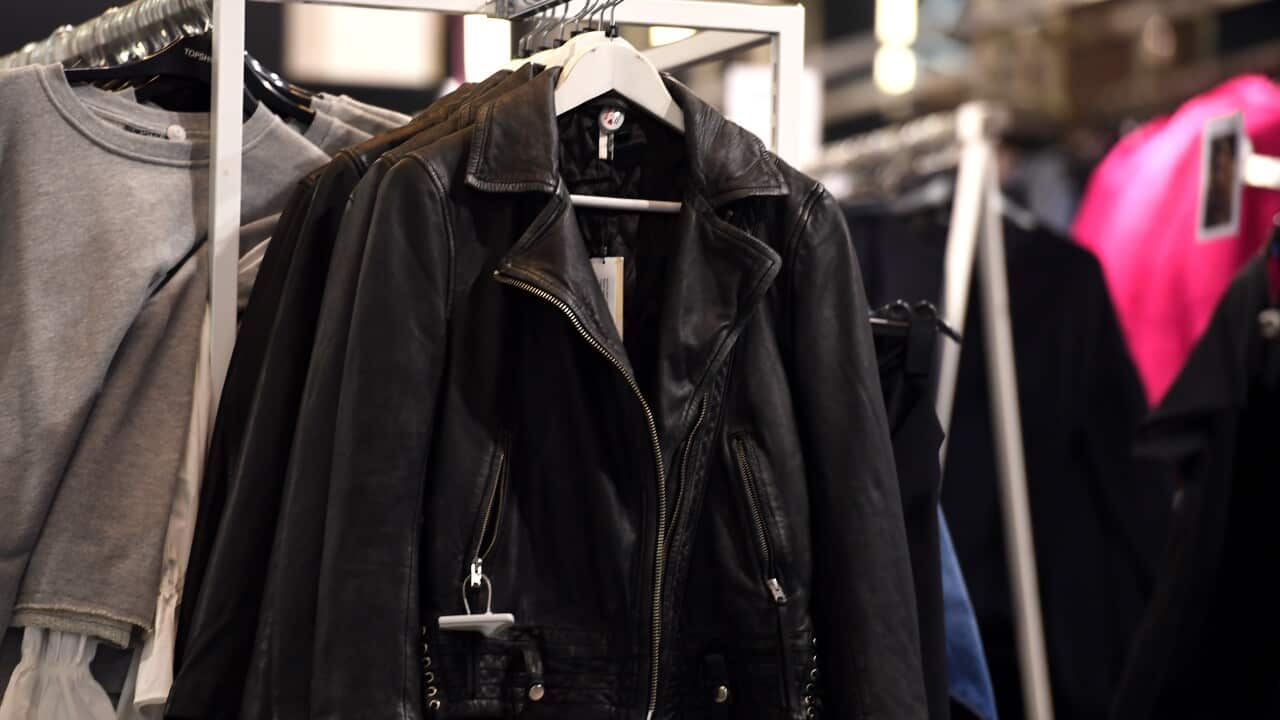Key Points
- A new scheme being launched this week aims to reduce fashion industry waste.
- The National Clothing Stewardship Scheme aims to improve the design, recovery, reuse and recycling of textiles.
- The Australian fashion industry is a contributor to the growing mass of textile waste.
Australia's $27 billion fashion industry is a major contributor to the growing mountain of textile waste sent to landfill each year.
Now, the industry is poised for a quiet revolution. A new national framework to be launched this week aims to tackle fashion waste — from design to end-of-life.
On average, each Australian buys 56 items — or 15 kilograms of new clothing each year — most of it made from synthetic material that cannot be, or has not been, recycled.
That's according to Leila Naja Hibri, chief executive officer of the Australian Fashion Council, who says Australians dispose of around half of the 1.5 billion items made locally and imported each year, into landfill.
"Our industry is at a pivotal point, it is at a breaking point, in terms of its social and environmental impact," Ms Hibri said.

The scheme aims to promote recycling and reuse of clothing. Credit: SBS / Sandra Fulloon
The scheme aims to improve the design, recovery, reuse and recycling of textiles, providing a roadmap to 2030 for clothing circularity in Australia. It is due to begin operation in July 2024.
"The aim of the scheme is to actually do away with clothing waste completely," Ms Hibri said.
Ms Hibri has worked to involve Australia's 30 biggest clothing retailers which, she says, sell about 60 per cent of the clothing purchased each year.
Participating brands will pay a fee of around four cents for every imported item, and are likely to be rewarded with a rebate if their designs are easy to recycle.

Adrian Jones at a textile collection event in Sydney. Credit: SBS / Sandra Fulloon
The plant takes textiles from commercial partners and community collection events, then breaks down polyester and cotton blends into resalable components, keeping them in circulation and out of landfill.
"Polyester and cotton, when blended, can take over 200 years in the ground to decompose," said Mr Jones.
"During the decomposition process, textiles can produce many noxious gases, such as methane, and other chemicals may leach into the soil and could cause environmental damage."
BlockTexx uses a patented chemical process to convert the textiles into the individual building blocks of polyester and cotton. The components are then resold.
For example, polyester pellets are used for injection moulding, creating children's playground equipment, safety hats and safety barriers, Mr Jones said.
Cotton is reduced to cellulose — like a thick clay — which can be used as a hydro mulch or a fertiliser for land reclamation.
Mr Jones says the BlockTexx plant will processes 4,000 tonnes of textile waste this year, and he aims to increase that to 10,000 tonnes annually.

Unsold new clothes at Thread Together, in Sydney. Credit: SBS / Sandra Fulloon
That's according to Professor Alice Payne, Dean of the School of Fashion and Textiles at Melbourne’s RMIT and a member of the scheme consortium.
Professor Payne says the new National Clothing Product Stewardship Scheme aims to tackle the fashion industry's waste problems at the design stage.
"Australia is uniquely positioned to lead in clothing circularity... and this is an extraordinary opportunity," she said.
However, globally new clothing sales continue to grow quickly, driven by emerging markets including Asia and Africa.
If demand rises as expected, total clothing sales could reach 160 million tonnes in 2050 – triple the current volume.
Yet worldwide, less than one per cent of all clothing is recycled.
In May this year, European governments reached a landmark decision to ban the destruction of unsold textiles, a practice that contributes to massive waste and pollution in the fashion industry.
Circular business models, like BlockTexx, are one way to earn revenue from unwanted textiles, and reuse materials for longer, according to Gayle Sloan, CEO of the Waste Management and Resource Recovery Association of Australia.
"It is a real opportunity for us to divert from landfill and reuse, and it is actually a great economic opportunity," she said.
"Having onshore recyclers is absolutely what we need to do."









